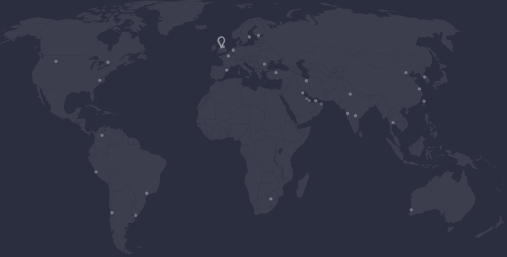Turnkey Instruments specialises in monitors which measure TSP, PM10, PM2.5 and PM1. Monitoring these particles is vital for several reasons, including for our health, the environment, and meeting the latest regulations.
Our monitoring systems are used in a wide range of environments, including industrial sites, manufacturing plants and by local authorities, councils and those involved in scientific research in this field.
Here’s more information breakdown using our dust and particle monitoring systems are useful:
It can monitor the health impact of TSP (Total Suspended Particulates), which includes all airborne particles with diameters up to around 100 micrometres (µm). Larger particles can irritate the eyes, nose, and throat. Although they might not penetrate deeply into the lungs, they can still cause discomfort and respiratory issues.
Meanwhile, PM10 includes particles with diameters of 10 micrometres or less. These particles can reach the upper respiratory tract and lungs, leading to respiratory issues, aggravating asthma, and reducing lung function.
Then there’s PM2.5 which consists of finer particles with diameters of 2.5 micrometres or less.
These can penetrate deep into the lungs and even enter the bloodstream. Long-term exposure can lead to serious health problems such as heart disease, stroke, lung cancer, and chronic respiratory diseases.
Last but not least PM1 refers to ultrafine particles with diameters of 1 micrometre or less.
These particles can penetrate the deepest parts of the lungs and enter the bloodstream, posing significant health risks similar to PM2.5 but potentially more severe due to their size and ability to carry toxic substances.
Monitor the environmental impact of dust and particles.
By using our monitoring equipment, you can assess overall air quality. Poor air quality can affect ecosystems, reduce visibility in many important settings, and contribute to environmental degradation.
It can also impact the climate. Particulate matter, especially fine particles like PM2.5 and PM1, can affect climate by absorbing and scattering sunlight and influencing cloud formation.
Our equipment can help you meet the latest regulatory compliance.
Many countries, including the UK, have air quality standards that include limits for TSP, PM10, and PM2.5. Monitoring these parameters ensures compliance with national and international regulations, helping to protect public health and the environment.
Easily collect and share data.
Using our equipment, you can produce the data necessary for developing and implementing air quality management policies and strategies.
With our monitoring systems, it’s also easier to identify the source of pollution. Different sizes of particulate matter can originate from various sources. For instance, TSP and PM10 can be generated from construction sites, road dust, and industrial activities.
PM2.5 and PM1 often come from combustion processes, such as vehicle exhausts, industrial emissions, and residential heating. By identifying the sources, it’s easier to target specific pollution control measures.
Real-time monitoring of particulate matter levels can provide immediate data to the public, enabling them to take protective measures, such as staying indoors on high pollution days.
Authorities can issue health warnings and advisories based on the levels of these pollutants.
Using our monitors to measure TSP, PM10, PM2.5, and PM1 will give you a comprehensive understanding of particulate pollution and its impacts on health and the environment. This data is essential for formulating effective air quality management strategies, ensuring regulatory compliance, and protecting public health.
All our instruments are produced by an in-house team.
This means we can provide exceptional support, helping you make the most of your investment. Since we designed and developed all of our testing equipment, we understand every aspect of how the equipment works. Our team knows how to get the most out of it and can offer the highest levels of customer support.
Find the right monitoring system for your requirements.
Our latest products include the iPMplus, a particle spectrometer to measure the size distribution between 0.2 and 10 μm, alongside these standard particulate fractions. It also comes with built-in Wi-Fi and 4G/5G connectivity and data pushing.
This new iPM instrument employs a unique combination of light extinction and light scatter to accurately analyse individual airborne particles. It can therefore simultaneously measure all the PM size fractions with great accuracy.
Meanwhile, our Topas and Osiris and iPMplus monitors are Environment Agency MCERTS certified for PM10 and PM2.5. Along with measuring airborne particles, they can also be used to measure environmental factors like wind speed and direction, temperature, humidity, rainfall and atmospheric pressure.
Our team is dedicated to providing accurate and user-friendly scientific and industrial instruments. We’re continually investing in research and product development and our in-house product designers and engineers are consistently at the forefront of this industry.
Find out more about our dust and particle monitoring equipment. Or don’t hesitate to contact our friendly team for more information.


